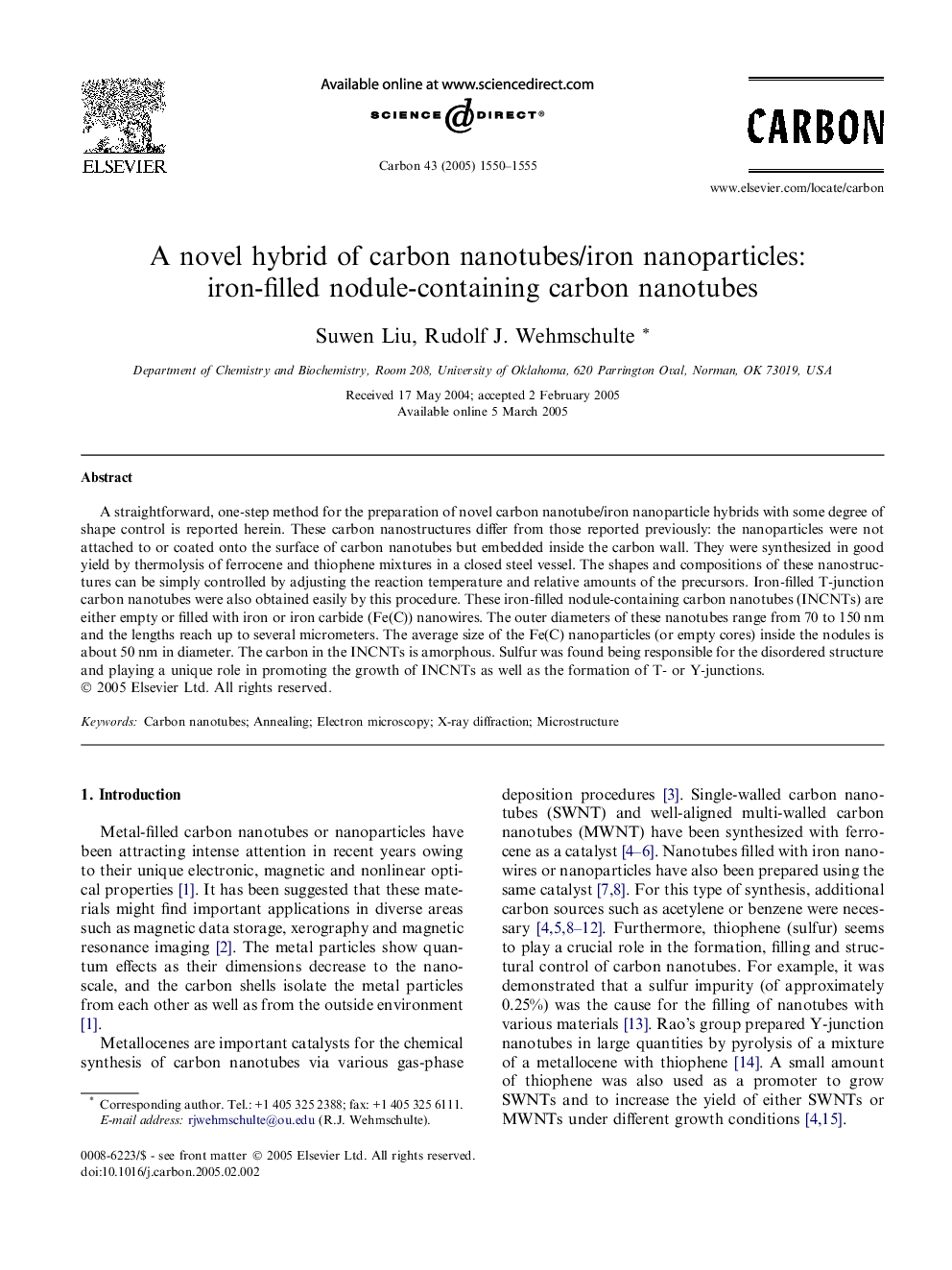| Article ID | Journal | Published Year | Pages | File Type |
|---|---|---|---|---|
| 10611297 | Carbon | 2005 | 6 Pages |
Abstract
A straightforward, one-step method for the preparation of novel carbon nanotube/iron nanoparticle hybrids with some degree of shape control is reported herein. These carbon nanostructures differ from those reported previously: the nanoparticles were not attached to or coated onto the surface of carbon nanotubes but embedded inside the carbon wall. They were synthesized in good yield by thermolysis of ferrocene and thiophene mixtures in a closed steel vessel. The shapes and compositions of these nanostructures can be simply controlled by adjusting the reaction temperature and relative amounts of the precursors. Iron-filled T-junction carbon nanotubes were also obtained easily by this procedure. These iron-filled nodule-containing carbon nanotubes (INCNTs) are either empty or filled with iron or iron carbide (Fe(C)) nanowires. The outer diameters of these nanotubes range from 70 to 150Â nm and the lengths reach up to several micrometers. The average size of the Fe(C) nanoparticles (or empty cores) inside the nodules is about 50Â nm in diameter. The carbon in the INCNTs is amorphous. Sulfur was found being responsible for the disordered structure and playing a unique role in promoting the growth of INCNTs as well as the formation of T- or Y-junctions.
Related Topics
Physical Sciences and Engineering
Energy
Energy (General)
Authors
Suwen Liu, Rudolf J. Wehmschulte,
